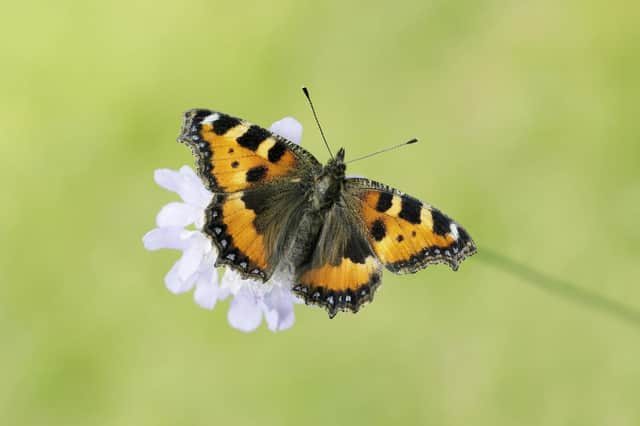Big Butterfly Count: Time running out to save some iconic butterfly species, say experts


The call comes as Scots are urged to take part in the world's largest annual butterfly survey, which starts today.
The Big Butterfly Count sees thousands of people across the UK spending time outdoors counting butterflies and some day-flying moths.
Advertisement
Hide AdAdvertisement
Hide AdButterfly Conservation (BC), the wildlife charity that organises the citizen science event, said the colourful insects suffered their worst year ever in 2021, with the lowest ever numbers recorded north and south of the Border.
Half of Britain's remaining butterfly species are now on the Red List of highest conservation concern, and are threatened or near threatened with extinction.
As butterflies and moths are an important indicator of the health of our environment, such a reduction in their numbers is "a cause for serious concern".
Dr Zoe Randle, Senior Surveys Officer at BC, said: "The Big Butterfly Count is the largest natural history citizen science project involving insects in the world and provides us with a valuable snapshot of what is happening for butterflies across the whole of the UK.
"It can act as an early-warning system, letting us know how various environmental changes are impacting insects, and allows us to gather vital data from places that would otherwise be totally unrecorded.
"We really need people’s help this year to help us figure out where our butterflies are and what we need to do to save them.
"It’s not just the rare species of butterfly -- the ones with restricted habitat or food plants -- that we are concerned about. Some of our previously commonly seen butterflies, like the Small Tortoiseshell, are also declining rapidly."
From today until August 7, members of the public will spend 15 minutes at a time in an outdoor space counting the number and type of butterflies they see. Increases or declines are then calculated on the average number per count.
Advertisement
Hide AdAdvertisement
Hide AdThe results are used to help map how the insects are faring and where conservation efforts should be targeted in the future.
In Scotland during last year's Count, a record 5420 butterfly counts were submitted by 4005 people. However, the average number of butterflies per count fell by 7 per cent from 2020 to just 6.03 on average -- below the previous record low of 6.12 set in 2017.
Of the 17 species featured in the Count in Scotland in 2021, ten had declined from the previous year. Of the 37 species of butterfly found north of the border, 13 -- over a third -- are now on the Red List.
The colourful Peacock suffered the largest decline, falling by 80 per cent compared with 2020, followed by the iconic Small Tortoiseshell (-70 per cent) and Red Admiral (-62 per cent).The most commonly seen butterfly in the 2021 Big Butterfly Count in Scotland was the Small White, followed by the Ringlet and Meadow Brown.Dr Amir Khan, BC Ambassador and one of a number of famous faces supporting the Big Butterfly Count this year, said taking part was not only good for the insects but also for participants' health and wellbeing."Watching butterflies for just 15 minutes can be a wonderful and calming experience."
Comments
Want to join the conversation? Please or to comment on this article.